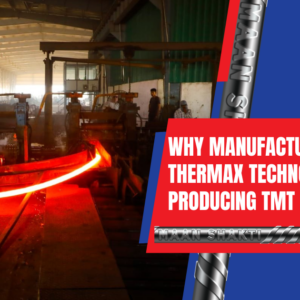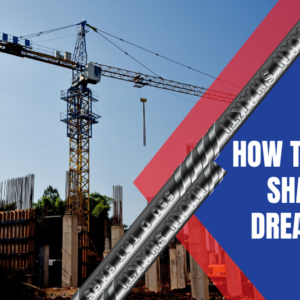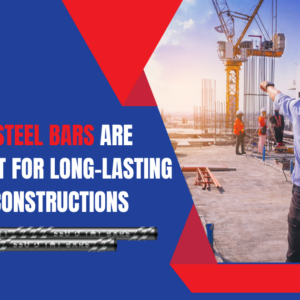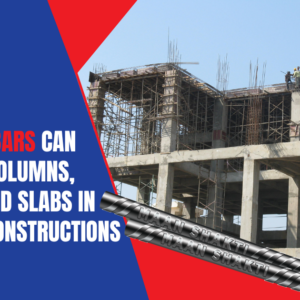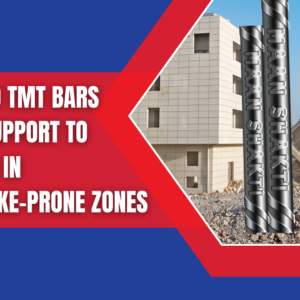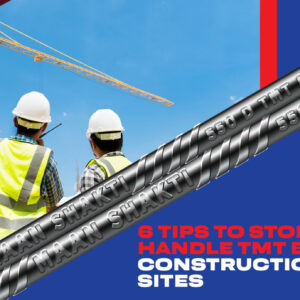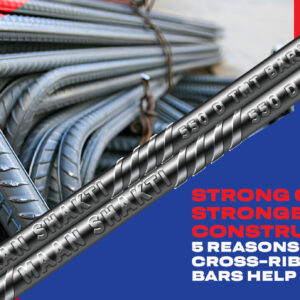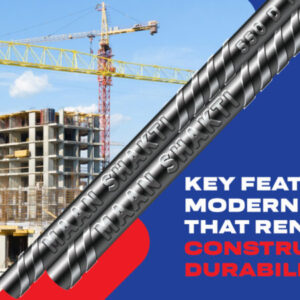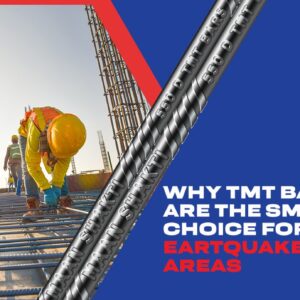As the population continues to rise, there has been a rapid increase in the construction of buildings, dams, flyovers, and other projects. The construction industry prefers the use of durable and flexible TMT bars to ensure the structural integrity of these projects. However, you must use high-quality TMT bars for the overall construction process. To...
Category: <span>TMT Bars</span>
How TMT Bars Shape Your Dream Home
Each of us dreams of building our own home. Whether in rural or urban areas, we want a spacious and lively space for ourselves. We want our own homes for comfort, convenience, and privacy. To build our dream homes, the construction industry needs strong, reliable, and sustainable materials such as TMT Bars. In this blog,...
Why TMT Steel Bars Are Important for Long-Lasting Building Constructions
In the construction industry, factors like durability and resilience are essential. Thermo-mechanically treated Bars have become one of the leading sources of support for construction. Are you looking forward to leading a construction project? It’s time to choose premium-quality TMT bars. We at Maan Shakti can offer you the best TMT bars suitable for every...
How TMT Bars Can Support Columns, Pillars and Slabs in Modern Constructions
Thermo-mechanically treated Steel Bars (TMTs) have become a crucial part of modern Indian constructions. Despite different architectural designs, columns, pillars, and slabs are standard, and premium-quality TMT bars can offer maximum structural stability. At Maan Shakti, we can offer the best TMT bars for your constructions. Be it your building, bridge, commercial units, or industrial...
Tips To Save Cost and Get Premium Quality While Buying TMT Bars
TMT Bars play an undeniable role in India’s construction industry. Apart from their superior flexibility and durability, TMT bars can reduce your construction costs and building maintenance. How exactly? This blog can provide you with the best answers. At Maan Shakti, we can offer you premium-quality TMT bars suitable for every construction. Moreover, you can...
How 550D TMT Bars Render Support To Buildings in Earthquake-Prone Zones
In construction, selecting the right material is necessary to ensure the longevity of buildings and bridges. Only the best materials can increase resistance and secure residents over time. Fe 550D TMT Bars are among the sturdiest construction materials, offering maximum protection. But where do you get the best TMT bars? Maan Shakti is one of...
6 Tips to Store and Handle TMT Bars in Construction Sites
Thermo-Mechnically Treated (TMT) bars have revolutionised India’s construction industry. However, building contractors and subcontractors face difficulty in properly storing and managing TMT bars. As manufacturers of corrosion-resistant TMT Bars, we can provide guidance on how to store and handle TMT bars for construction sites. At Maan Shakti, we ensure strength and durability in each of...
Strong Grip, Stronger Construction: 5 Reasons How Cross-Ribbed TMT Bars Help
India’s earthquake-prone zones impose high risks on construction ventures. Despite excellence in structural innovation, challenges of collapse remains. That’s why resilient construction materials like Thermo-Mechnically Treated (TMT) Bars can help. Manufacturers like Maan Shakti can offer sturdy TMT bars for strengthening foundation and structural intricacies of constructional projects. As one of the Best Supplier of...
Key Features of Modern TMT Bars That Render To Constructional Durability
India’s construction industry has emerged rapidly in recent years. Civil engineering and architecture have also undergone significant innovation. TMT Bars are one of the leading innovations designed to render constructional durability. TMT, or Thermomechanically Treated Bars, derives its name from the advanced manufacturing process. This process offers structural durability, making these bars perfect for any...
Why Are TMT Bars the Smart Choice For Earthquake-Prone Areas
When it comes to construction in earthquake-prone areas, not all materials can handle the “ground-shaking” truth. Buildings need a strong backbone. That’s where Thermo Mechanically Treated (TMT) bars steal the show. They are the silent heroes that ensure your home stays standing while the earth plays a risky game of musical chairs. In this blog,...

